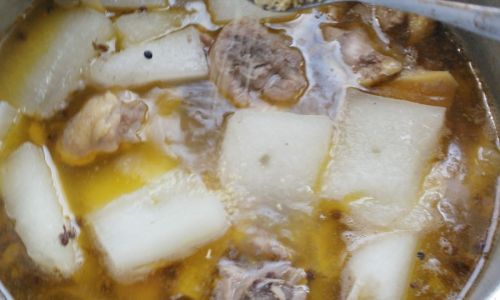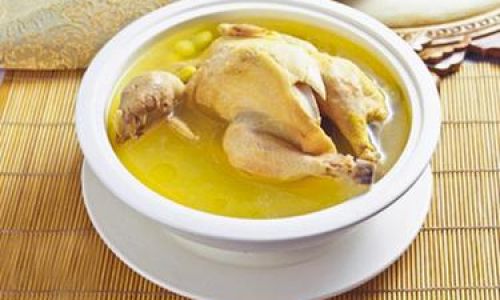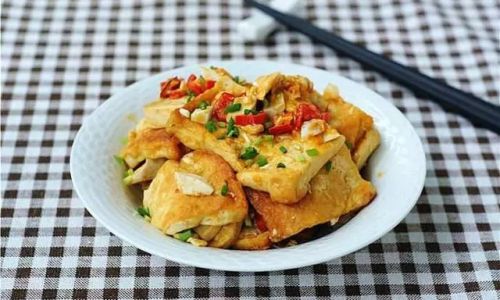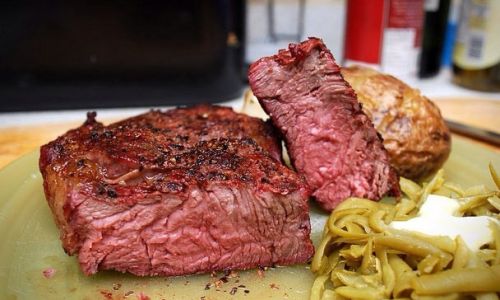Free-range chicken soup, known as Chai Ji Tang in Chinese, is a beloved traditional dish revered for its rich nutritional profile and healing properties. Packed with protein, vitamins, and minerals, this soup is celebrated for boosting immunity, nourishing the body, and promoting overall well-being. To maximize its health benefits, the cooking process must balance flavor, texture, and nutrient retention. This article explores the science-backed methods and cultural wisdom behind crafting the most nutritious free-range chicken soup, ensuring every spoonful delivers optimal goodness.

The Foundation: Selecting High-Quality Ingredients
The cornerstone of a nutritious soup lies in its ingredients. Free-range chickens, raised on natural diets and free from antibiotics, offer superior nutritional value compared to factory-farmed birds. Their meat is leaner, richer in omega-3 fatty acids, and contains higher levels of vitamins B3, B6, and selenium. When choosing a chicken, opt for organic or pasture-raised varieties with firm, unbruised skin and a mild aroma.
Complementary ingredients play a pivotal role in enhancing both flavor and nutrition. Traditional Chinese medicine often incorporates herbs like huang qi (astragalus root), dang shen (codonopsis), and gou qi zi (goji berries) to strengthen the soup’s therapeutic effects. Modern adaptations may include vegetables such as carrots, celery, and mushrooms, which add fiber, antioxidants, and phytonutrients. Ginger, a staple in many recipes, aids digestion and imparts a warming quality, while garlic contributes allicin, a compound with antimicrobial properties.
Preparation: Cleaning and Marinating
Proper preparation ensures the soup remains pure and flavorful. Start by thoroughly cleaning the chicken: remove any remaining feathers, trim excess fat, and rinse the cavity under cold water. Some chefs recommend soaking the chicken in salted water for 30 minutes to eliminate impurities and tenderize the meat.
For added depth, marinate the chicken briefly with ginger slices, rice wine, and a pinch of white pepper. This step not only infuses flavor but also helps neutralize any lingering gamey taste. If using dried herbs, soak them in warm water for 15 minutes to reactivate their aromatic oils.
Cooking Techniques: Slow Simmering for Maximum Nutrition
The key to unlocking the chicken’s nutrients lies in slow simmering. Unlike high-heat boiling, which can degrade heat-sensitive vitamins and proteins, a gentle simmer preserves the soup’s integrity while extracting collagen from bones and connective tissues. Collagen, when broken down into gelatin, supports joint health, skin elasticity, and gut lining repair.
Stovetop Method:
- Place the whole chicken or chopped pieces into a large stockpot. Add cold water to cover by 2 inches—cold water ensures even cooking.
- Bring to a boil over medium heat, then immediately reduce to a bare simmer. Skim off any foam that rises to the surface; this removes impurities without discarding nutrients.
- Add aromatic ingredients: ginger, garlic, scallions, and herbs. Avoid salt at this stage, as it can toughen the meat.
- Maintain the simmer for 2–3 hours. The longer cooking time allows minerals like calcium, magnesium, and phosphorus to leach from the bones into the broth.
Slow Cooker Alternative:
For busy cooks, a slow cooker offers a hands-off approach. Set the appliance to low heat and cook for 6–8 hours. This method is ideal for maximizing nutrient extraction, as the steady, low temperature mimics traditional stovetop simmering.
Pressure Cooker Hack:
While a pressure cooker reduces cooking time to 45–60 minutes, it may yield a less viscous broth due to rapid evaporation. Compensate by using a 1:1 ratio of chicken to water and adding a tablespoon of apple cider vinegar to help dissolve minerals from the bones.

Nutritional Enhancements: Herbs and Add-Ins
Certain ingredients amplify the soup’s health benefits:
- Goji Berries: Rich in beta-carotene and zeaxanthin, these berries support eye health and immunity. Add them 30 minutes before serving to prevent bitterness.
- Red Dates (Jujubes): High in vitamin C and antioxidants, they add natural sweetness. Poke holes in them to release flavor.
- Shiitake Mushrooms: Their lentinan compounds boost immune function. Use dried mushrooms and rehydrate them in the broth.
- Astragalus Root: A traditional Chinese herb believed to enhance vitality. Remove it before serving, as it has a fibrous texture.
Common Mistakes to Avoid
- Overcooking Vegetables: Add delicate greens like spinach or bok choy during the final 10 minutes to retain vitamins.
- Adding Salt Too Early: Salt draws moisture from meat, resulting in dryness. Season only after cooking.
- Discarding Fat: While excessive fat is unhealthy, a moderate amount carries fat-soluble vitamins (A, D, E, K). Skim excess fat but leave a thin layer for flavor.
- Using Frozen Chicken: Freezing alters meat texture and may reduce nutrient availability. Use fresh chicken whenever possible.
Serving and Storage
Serve the soup hot, accompanied by brown rice or whole-grain noodles for added fiber. For a complete meal, add diced vegetables like carrots, corn, or daikon radish during the last hour of cooking.
Leftover soup can be refrigerated for up to 3 days or frozen for 3 months. To reheat, avoid boiling vigorously; instead, warm gently to preserve nutrients.
The Science Behind the Broth
Research underscores the health benefits of bone broth. A 2017 study published in the Journal of Renal Nutrition found that chicken broth supplemented with vegetables increased antioxidant levels in participants. Additionally, the gelatin in slow-cooked broth may support intestinal health by sealing the gut lining, as noted in a 2015 review in Clinical and Experimental Gastroenterology.
Cultural Significance
In Chinese culture, free-range chicken soup is more than food—it’s a remedy. Given to convalescents, new mothers, and the elderly, it symbolizes care and nourishment. The act of simmering the soup for hours mirrors the patience required to heal, blending tradition with modern wellness.
Conclusion
Crafting the most nutritious free-range chicken soup is an art rooted in science and tradition. By prioritizing fresh ingredients, slow simmering, and strategic add-ins, you create a dish that nourishes the body and soothes the soul. Whether battling a cold or seeking daily vitality, this timeless recipe remains a testament to the power of wholesome, mindful cooking. Experiment with herbs, savor the process, and let each bowl be a celebration of health and heritage.






0 comments